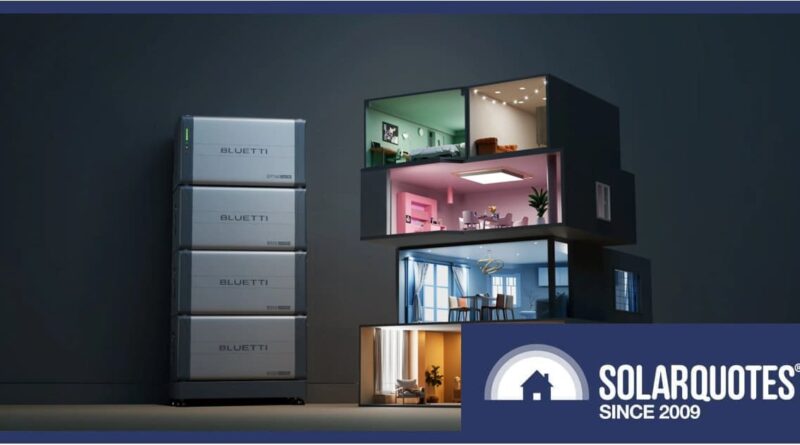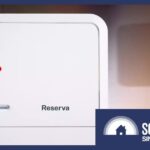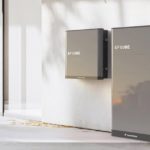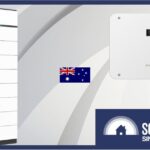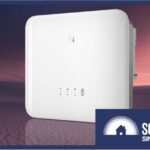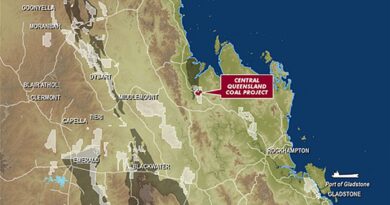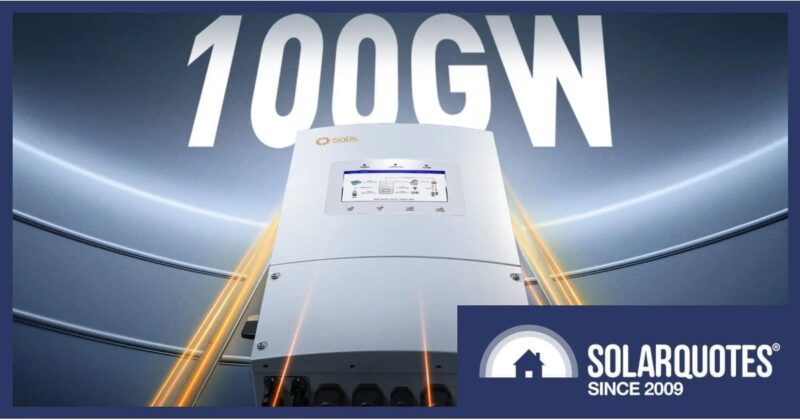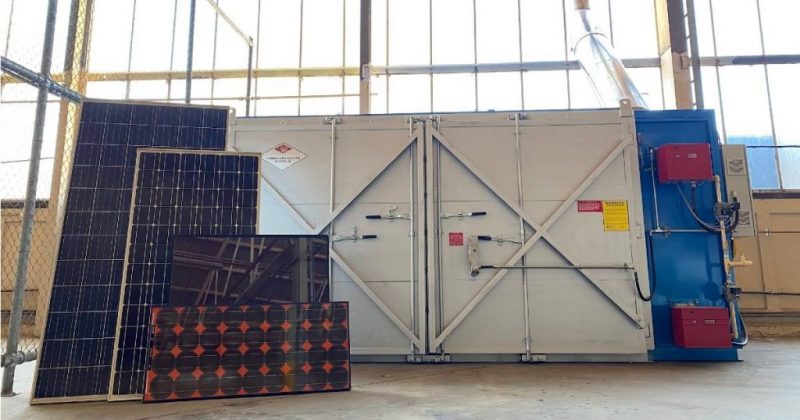Bluetti EP760 Home Battery Now Available In Australia
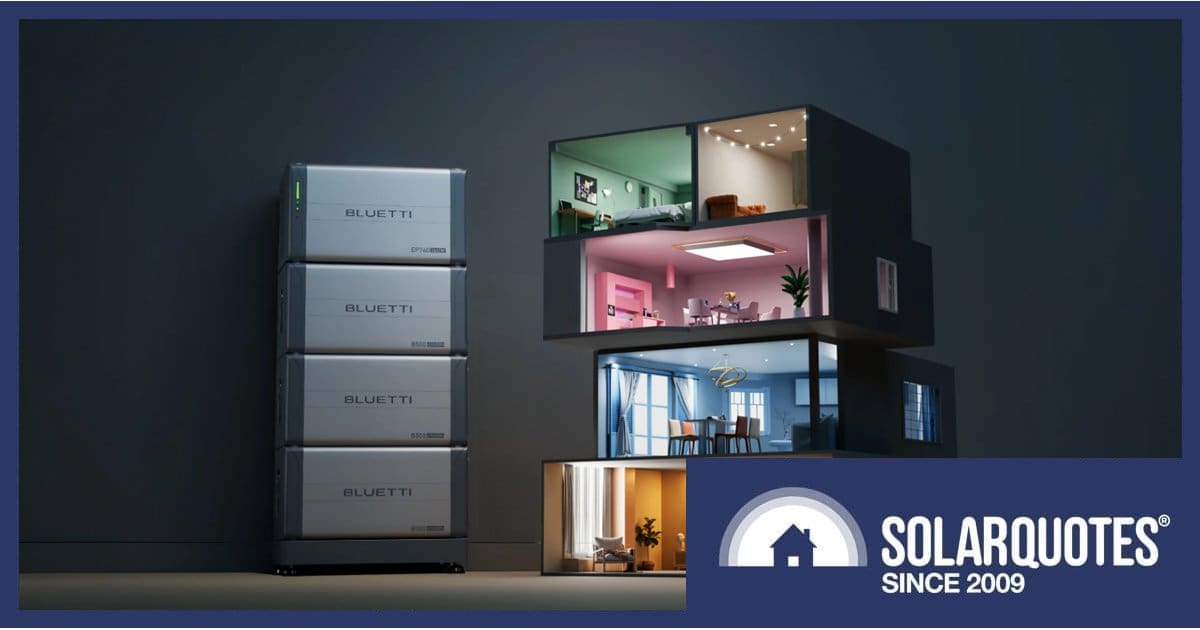
Best known in Australia for its off-grid/camping solar and energy storage solutions, Bluetti has expanded into grid-connected home batteries. So, is the EP760 any good?
Bluetti was founded in 2019 in Nevada, USA, but manufactures in China. After attracting USD $6.7M on the crowdfunding platform Indiegogo, its product range kicked off in 2020 with the AC200 – a 2 kWh battery featuring all sorts of outlets and solar panel support.
Thanks to media coverage, lots of advertising, a referral program and the addition of a bunch of products including folding solar panel kits, Bluetti has become a fairly well known name here among campers and off-gridders; although reviews from customers vary. Now the company is looking to break into the home battery market.
Introducing The Bluetti EP760
The EP760 is presented by Bluetti as a “single phase hybrid all in one residential energy storage system”. The modular battery system consists of the EP760 hybrid inverter capable of up to 7.6kW output ….
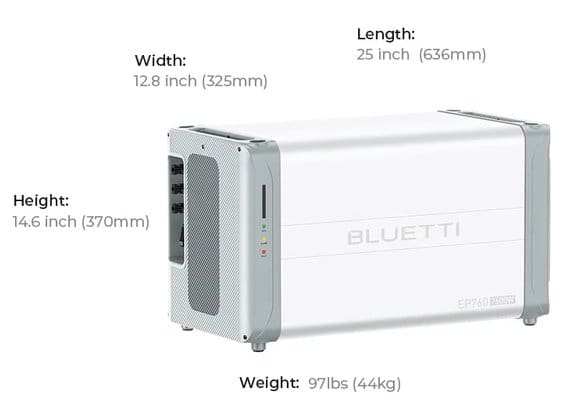
… and stackable B500 batteries based on LiFePO₄ chemistry that are 4.96 kWh capacity each.
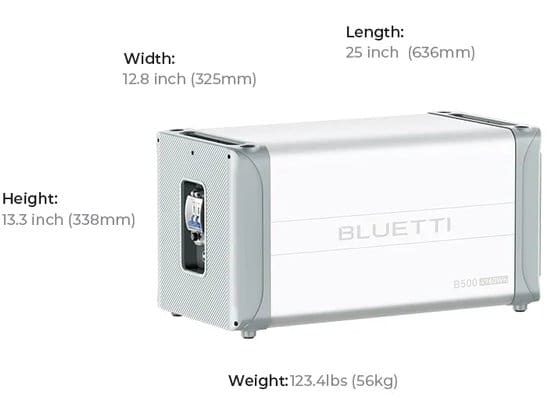
A basic arrangement offers 9.9 kWh capacity (2 battery modules is the minimum), expandable to 19.8kWh (4 battery modules maximum). However, the Depth of Discharge (DoD) is noted as 90%; meaning the usable capacity of the 9.9 kWh configuration would be about 8.9 kWh as I understand it.
Bluetti says in the event of a power outage, the EP760 can switch from grid power to battery power in less than 10 milliseconds. It has 3 MPPT channels, capable of supporting up to three 3kW strings of solar panels. I noticed its working temperature range is -20℃~40℃1, which could present some issues in toasty regions in terms of warranty should things go pear-shaped.
We’ve been assured the EP760 is “built to last and comes with a no-hassle 10-year warranty”; but that remains to be seen. The warranty document I saw only covers the inverter; and there are a couple of gotchas in that – including only 2 years warranty on fans and WiFi modules.
Is The EP760 System Approved For Use In Australia?
Well, here’s the thing. The EP760 hybrid inverter has been listed on the CEC approved inverter list since late last month. It’s easy to miss as it’s not under the Bluetti name, but instead under Shenzhen PowerOak Newener CO LTD.
However, the B500 modules don’t appear to be on the CEC approved battery list; but Bluetti’s web site at the time of writing indicates they are. Perhaps like the inverter, the B500 module is under another manufacturer name.
The EP760 hybrid inverter specifications sheet also notes:
“It is only compatibility [sic] with the B500 BESS and must work with it.”
Not being on the approved battery list would exclude it from some state-based incentive programs. Network operators also require batteries meet certain standards, which typically align with CEC approval, so you’d need to check carefully there (and it’s wise to check with your insurer too). Some installers may refuse to work with a battery that isn’t CEC listed, and the warranty documentation states it must be installed by Bluetti certified installers.
How Much Does The EP760 Battery Cost?
The following prices are for hardware only. Installation of home batteries generally costs around $1,500 extra for a simple job, but it varies wildly depending on the installation scenario and installer.
- EP760 + 2*B500 (9.9 kWh) – $11,999
- EP760 + 3*B500 (14.88 kWh) – $16,998
- EP760 + 4*B500 (19.84 kWh) – $21,997
Just as a comparison, a Tesla Powerwall 2 with 13.5 kWh usable capacity costs around $12,100 currently for the hardware, which includes the Tesla Gateway. That would be equivalent to the 14.88 kWh EP760 with DoD taken into account, and the EP760 is nearly $5,000 more. However, the EP760 offers up to 7.6kW power output (assumed continuous), while the Powerwall 2 is 7kW peak / 5kW continuous2.
While we haven’t yet added the Bluetti EP760 to the SQ web site, you can find more info here. Compare specs and pricing with other residential energy storage solutions available in Australia using SolarQuotes’ home battery comparison table; along with learning everything you need to know about buying solar batteries.
Footnotes
- The EP760 web page states -20℃~40℃, the manual states -20℃~50℃, and an inverter warranty exclusion states where “The maximum temperature of the environment where the Products are located is above 40℃ for more than 5 hours at a time.”
- Powerwall 3 boasts more power, and may be around the same price.
Original Source: https://www.solarquotes.com.au/blog/bluetti-home-battery-mb2923/

